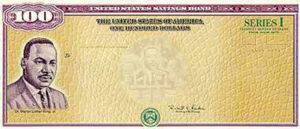I-Bonds: An Investors Primer
Author’s Confession:
As a 40+ year veteran of “Wall Street”, I have to admit that I-Bonds were not on my radar screen until the pandemic. Like many in the finance industry, I overlooked this asset, as they were not suitable for the institutional investors, they also provided no “mark-up” , fee or commission opportunities for banks, money managers and broker/dealers to warrant their involvement. Therefore, there has historically been very little promotion, education and information on these floating rate savings certificates. That changed during the pandemic. The surge of inflation we experienced translated to an incredible investment opportunity. Accordingly, I took it upon myself to help educate and highlight this asset category. Inflation has now come down substantially, and as a result, the income offered on these bonds has also come down as expected. This article is intended as an update to this product. The most recent coupon reset (on May 1, the coupon reset to 4.3%0), down substantially from the record 9+% we experienced during the pandemic.
Turning Lemons into Lemonade: Make Inflation Work For You
Simply put, I-bonds are a floating rate investment vehicle. The coupon on these bonds changes semi-annually. The reset is based on 2 considerations,
1: the coupon resents to changes in the inflation rate (The CPI rate) over the prior 6month period.
2: Additionally, at her discretion, the Treasury Secretary can choose to increase the yield even further, an option she exercised in the two most recent semi-annual resets. New most recent reset for the May 23-Nov 24 will be 4.30% (down from 6.47% the prior period. That 4.30% is comprised of 3.39% from increases in inflation (CP)I, plus a ”gift” of .91% from Janet Yellen.

Understanding the Liquidity (or lack of) in I-Bonds
I-Bonds are sold with 30-year maturities. However, the Treasury Dept does offer redemption features. Please note: unlike traditional treasury securities, these I-Bonds cannot be resold in the secondary market prior to maturity. Should you seek to redeem them, the Treasury Dept. offers the following redemption provisions:
Within the first year: No redemptions possible: “locked in” for 1 year
Years 2-5: Redemption with 3-month interest penalty
After 5 years: Redemption available with no penalty
Note: Given the lack of penalty for any redemptions after 5 years, I personally would be inclined to view these as a 5 year investment, with an extendable option
How to Purchase I-Bonds
This is a security specifically for the retail investors. They can be purchased directly from the treasury department, and as an investor, you pay the face value of the bond. For example, you pay $50 for a $50 bond. (The bond increases in value as it earns interest.)
Electronic I-Bonds: Are purchased directly from the treasury department, where you can buy a dollar amount up to $10,000 per year. For example, you could buy $50.65 in I-Bonds.
Paper I-Bonds are sold in five denominations: $50, $100, $200, $500, $1,000. Interestingly, paper I-Bonds are only available if using federal tax refunds to buy the bonds
To Learn More:
The website where investors can buy I-Bonds, as well as learn more of the details:
https://www.treasurydirect.gov/indiv/research/indepth/ibonds/res_ibonds.htm
